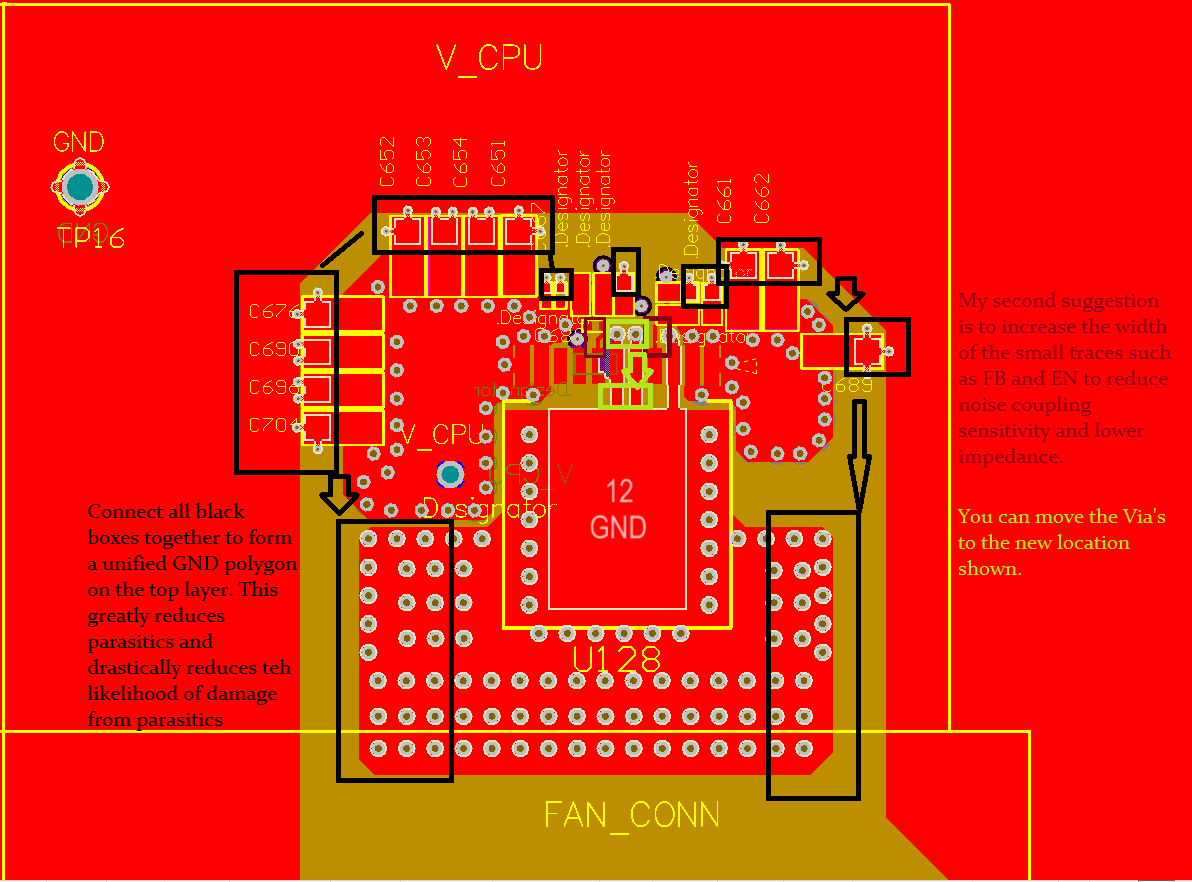Hi,
I use the LMZ13608 on the board with 1.2V, 2.5V, 3.3V.
first batch was 3 cards.
In one of the cards , on the voltage of 1.2V, i get Saw tooth on the output of about 200 mv and every ~175 us (not the freq of the lmz13608 internal osc).
I read again the DS and didn't found any explanation except defect component.
Imlementation (component name came from LMZ13608 DS):
cin: 3X10u+0.1U
Cout: 8X100U+4.7u+0.1U
Rfbt:: 1.033 kohm
rfbb: 2Kohm
css: 0.1u
Rent: 100K
Renb: 20K
Cff: was 10n and now is unmount (no change in the Saw tooth)
Pls advise
Regards
Zeev Gerber




